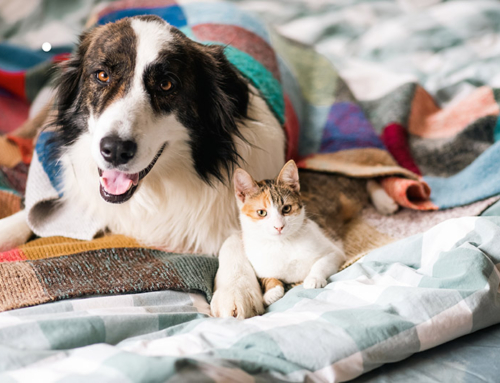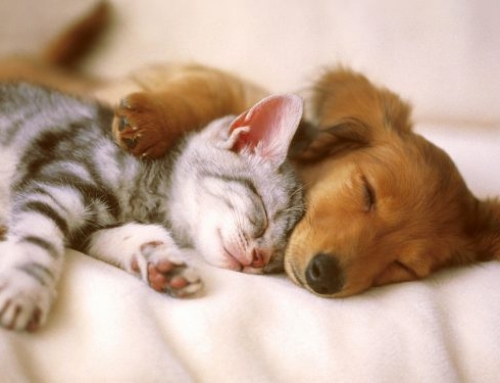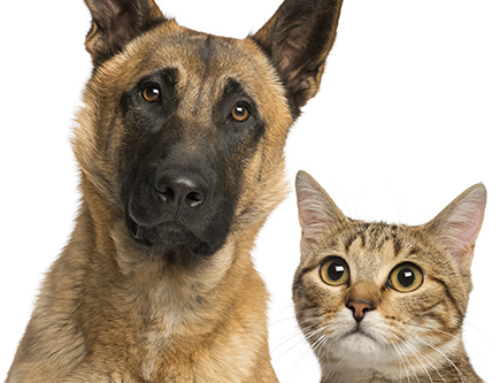THE WHOLE SCOOP AND NOTHING BUT THE SCOOP!
Indoor cats are naturally inclined to use a well-maintained litter box. Most cats are trained by their mother as kittens and the ones that aren’t catching on really fast. Kittens begin using the litter box by the third week of life. They will follow their mother to the litter box and begin to imitate her bathroom etiquette. Litter box training for most adult cats is just showing them where the new litter box is located. But confining your cat to a small room initially is the best way to foster good litter box habits. However, urinating and defecating outside of the litter box, also known as “inappropriate elimination,” is one of the most common reasons for a cat to be relinquished to a shelter. The number one reason this behavior occurs is because the litter box is dirty. We all know how repulsive ‘porta-potties’ are and we are not asked to walk around in our own waste like humans often ask of their cats! Humans also don’t realize that a cat’s sense of smell is 14 times greater than ours. Think about how an outdoor cat would handle his bathroom duties. He would not be confined to a 2 x 2-foot bathroom. He would not choose to walk around in his own waste. He would simply choose another place to potty. Sadly, in most cases of inappropriate elimination, it is the fault of the human in charge of litter box duties.
Also, if your cat continues to make mistakes, the behavior can actually become a habit. In addition to the box being dirty, some other common reasons include litter box aversion, urine marking, hormonal problems and bladder infections or other medical issues. If your cat ever stops using a well-maintained litter box, a thorough veterinary exam should be the first step to rule out a health problem. Bladder infections are very common in cats, and one symptom is inappropriate elimination. Once an underlying medical problem has been ruled out, here are some tips to keep your cat happy with their litter box.
• Have as many litter boxes as you have cats plus one extra, and they can be side by side.
• Place the litter boxes in a quiet location that are easily accessible from a bathroom or a spare bedroom.
• Avoid placing the litter box in the laundry or utility room that may be too noisy or has too much traffic.
• Never startle your cat when they are using the litter box.
• Make sure you are using a litter that your cat likes. Studies show that most cats prefer clumping clay litter.1
• Make sure you have enough litter in the box. Keep at least 2-3 inches of litter in the litter box at all times and completely change out litter monthly.
• Scoop the litter box at least once a day to remove all urine and fecal waste.
• Never punish your cat for going outside of the litter box.
• Clean you litter box with an antimicrobial soap and rinse thoroughly to remove any traces of ammonia.
• Use the right litter box. Some cats may dislike covered or hooded boxes so it may be advisable to use a traditional open litter box.2
LITTER LITTER EVERYWHERE
The choice of litter these days can be overwhelming and the shelves are full of an array of litters made from clay, silica, recycled newspaper, pine, sawdust shavings and even cedar chips. Additionally, some litters are made from food ingredients such as corncobs, walnut shell meal, and wheat. These food-based litters are organic substances and when not maintained properly, have the potential to mold and decay in the moist litter box environment. Dust from even a well-maintained litter box can be a health concern for cats that are predisposed to asthma or have their litter box in confined quarters. Dust from a dirty litter box can cause more serious health issues. Studies have overwhelming shown that most cats prefer clay clumping style litter over other types, however not all clay clumping litter is equal. The basic component of most clay clumping litter is sodium bentonite, a natural mineral derived from the ash remains of ancient volcanic eruptions. To the sodium bentonite base, multiple ingredients can be added including fragrances, fillers, preventative ingredients and absorption additives to create a unique litter product. Ultimately, the end user, the cat, needs to be pleased with the litter or litter box rejection and house soiling may be a consequence. Again, the number one reason cats stop using the litter box is because they think it’s dirty!
WHAT’S THAT SMELL
Urine from a healthy cat contains only a small amount of ammonia, about 0.05%, but large amounts of urea about 2% and about 95% water. Cats with bladder infections can have a higher ammonia content. But typically, ammonia is only generated in cat litter boxes when bacteria present in the litter box produce an enzyme that converts the large amount of urea to ammonia and therefore creates that strong ammoniacal odor associated with most litter boxes. Ammonia is a colorless gas and has a very foul odor. Ammonia exposure can be dangerous to both humans and pets.3,4 Humans can detect ammonia at levels as low as 3ppm but cats detect it long before humans ever smell it. Ammonia levels can reach as high as 15ppm in 10 days if the litter box is not cleaned properly. Symptoms in cats with ammonia exposure include panting, weakness, coughing, nasal discharge, drooling, vomiting, loss of appetite and trouble breathing. Symptoms in humans include scratchy throat, nasal discharge, chest tightness, cough and eye irritation.
To control nasty smells coming from the litter box, there are various agents added to litter to neutralize or mask. However, masking the ammonia smell to make it more pleasurable to humans doesn’t eliminate the actual ammonia, which can be harmful to your cat’s upper respiratory tract.
TO FLUSH OR NOT TO FLUSH
As people have become more conscience of the environment, there has been a push to flush animal feces and litter down the toilet. Flushing cat litter down the toilet, even if that cat litter is marketed as safe for pipes or septic tanks, allows a parasite called Toxoplasma gondii, found in some cat feces, to enter the water supply. This parasite is not destroyed by sewage treatment and eventually makes its way into the ocean.
Once in the ocean, the parasite sinks to the bottom where it is consumed by creatures like crabs, anchovies, and sea stars, which are in turn eaten by marine mammals including sea otters. Sea otters are particularly susceptible to the parasite which can cause brain damage and death. This is of particular concern on the California coast where the sea otter population that was once 15,000 has dwindled to 2,500. Research has shown that in 17 percent of dead otters examined by the state Department of Fish and Game, the parasite was the primary cause of death.
California actually discourages’ the flushing of used cat litter and recent legislation requires labeling on all flushable cat litter, warning consumers about the dangers of flushing cat feces.
From a plumber’s perspective, there’s a whole other concern. Many plumbers responding to clogged toilets find cat feces and litter completely stopping up the drains. The issues are even more pronounced when flushing to a septic system. Septic systems are not designed to break down cat feces or litter, and if you engage in such a practice, be prepared to have your septic tank pumped out much more frequently. Sewer pipes, septic systems, and sewer treatment plants are designed to transport and break down human waste and human waste only. Therefore it is NOT advisable to flush kitty litter down the toilet in ANY circumstance.
BOTTOM LINE
It is much easier to prevent an inappropriate elimination problem with the right litter and sound litter box practices. In fact, with today’s technology, there are now products that stop ammonia from forming in the litter box in the first place. Not all the issues that cause cats to stop using the litter box are in our control, but many are, so choose your cat litter wisely and always consult your veterinarian for their opinion.
References
1. Neilson, J. Pick of the (Cat) Litter. Western Veterinary Conference, 2010
2. Grigg EK, Pick L, Nibblett B. Litter box preference in domestic cats: covered versus uncovered. J of Feline Medicine and Surgery 15(4) 280-284, 2012
3. Dodd, K.T., and Gross, D.R. Ammonia inhalation toxicity in cats: A study of acute and chronic respiratory dysfunction. Arch, Environ. Health 35:6-14. 1980
4. CDC National Institute for Occupational Safety and Health, NIOSH Time Weighted Average exposure limits for humans: 25 ppm for 8 hours. Short Term Exposure Limit: 35 ppm for 15 minutes.





